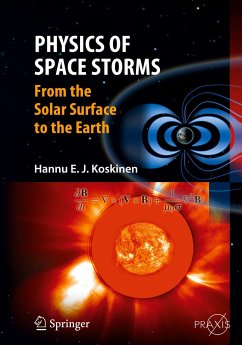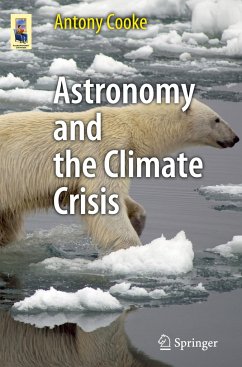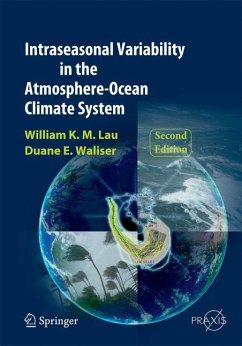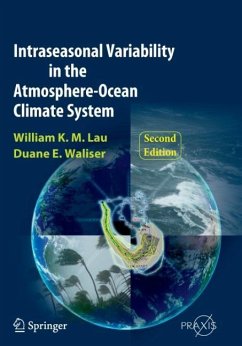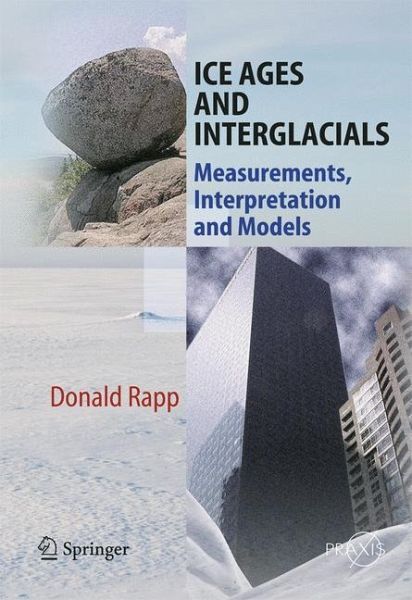
Ice Ages and Interglacials
Measurements, Interpretation and Models
Versandkostenfrei!
Versandfertig in 6-10 Tagen
111,99 €
inkl. MwSt.
Weitere Ausgaben:

PAYBACK Punkte
56 °P sammeln!
This book studies the history and gives an analysis of extreme climate change on Earth. In order to provide a long-term perspective, the first chapter briefly reviews some of the wild gyrations that occurred in the Earth's climate hundreds of millions of years ago: snowball Earth and hothouse Earth. Coming closer to modern times, the effects of continental drift, particularly the closing of the Isthmus of Panama are believed to have contributed to the advent of ice ages in the past three million years. This first chapter sets the stage for a discussion of ice ages in the geological recent past (i.e. within the last three million years, with an emphasis on the last few hundred thousand years). The second chapter discusses geological evidence for ice ages - how geologists surmised their existence prior to actual subsurface data that proved the theory. The following two chapters look at ice cores (primarily from Greenland and Antarctica). Chapter 3 discusses how ice core data is processed and Chapter 4 summarizes data obtained from ice cores. Chapter 5 discusses the processing of data obtained from ocean sediments, and summarizes the results, while the following chapter discusses data from other sources, such as "Devil's Cave." Chapter 7 summarizes the experimental results from Chapters 4, 5, and 6. It provides the foundation for comparison with theories in later chapters. In a perfect world, this data would be totally separate and disconnected from theory. Unfortunately, as the author shows, dating of much of the data was accomplished by "tuning" to the astronomical theory, which introduces circular reasoning. Chapter 8 provides a brief overview of the various theories that have been devised to "explain" the patterns of alternating ice ages and interglacials that have occurred over the past three million years. This serves as an introduction to the following three chapters which presents the astronomical theory in its various manifestations, compare the astronomical theory with data, and then compare other theories with data. Finally, Chapter 12 summarizes what we think we know about ice ages and, more importantly, what we don't know.
Ice ages represent perhaps the most dramatic example of extreme climate change on the Earth. Understanding how and why ice ages occur is of great importance in our wider understanding of the global climate system and how it might change. If one examines Greenland ice data for the past 100,000 years, it becomes very clear that the relatively warm period of the past 11,000 years stand out in striking contrast to the 90,000 years of extreme cold that preceded it. We now refer to the unusually warm period that we are in at the present time as an interglacial; the long preceding period of cold is a glacial or ice age. During the last ice age, humans developed elaborate tools and homo sapiens migrated from Africa to Europe, but it wasn't until that ice age ended 11,000 years ago that agriculture began and with it the foundation of modern civilization. It is therefore not surprising that there is enormous interest in trying to work out the mechanisms which trigger ice ages to begin,and what causes them to end. Of particular interest is the fact that ice ages appear to begin and end very abruptly on the geological timescale.
Previous and existing books on ice ages are mostly short, popular and non-technical. This book will provide an independent and complete summary of the latest data, independent of theory or analysis, before exploring theories and making comparisons with that data. Professor Donald Rapp has had a long and varied scientific and engineering career, with 48 years of experience in different fields. He has published many scientific papers and five books, including Assessing Climate Change, published by Springer-Praxis in December 2007.
Previous and existing books on ice ages are mostly short, popular and non-technical. This book will provide an independent and complete summary of the latest data, independent of theory or analysis, before exploring theories and making comparisons with that data. Professor Donald Rapp has had a long and varied scientific and engineering career, with 48 years of experience in different fields. He has published many scientific papers and five books, including Assessing Climate Change, published by Springer-Praxis in December 2007.







